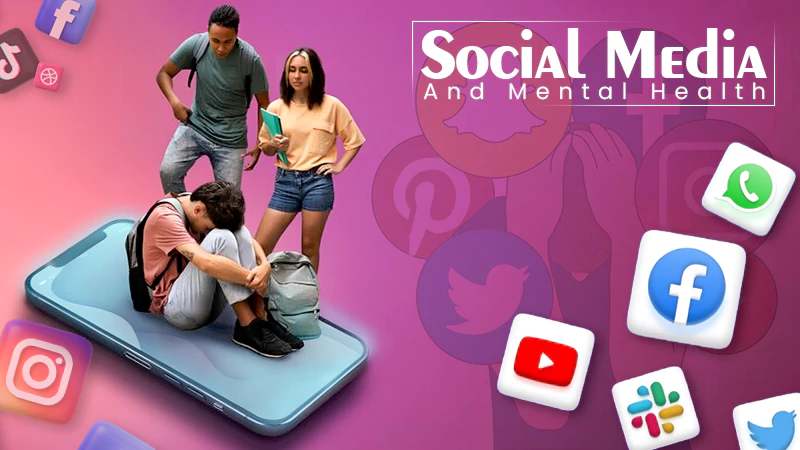Key Takeaways
- Social media can be both a threat and a helpful tool to your cybersecurity. Its extreme usage can vanish your privacy, but also an amazing tool to spread awareness about the same.
- Whereas on these platforms, you can spread awareness and positivity among the community, it can also spread misinformation among the same community.
- Courses on online security on platforms like Instagram and TikTok can certainly help Digital Natives become cyber-smart.
The digital era’s blessings are many—think instant communication and smart homes. Yet, it’s not all rosy. There’s a dark cloud named cybersecurity. You see, as we connect more, we also risk more. Networks, your data, and even smart refrigerators aren’t safe from hackers. Phishing, ransomware, data theft—this is the world we navigate. More than ever, securing your digital footprint is vital.
This graph represents the percentage of organizations compromised by at least one successful cyber attack, in different years.
So, where does social media stand in this scenario? A tool for good or a breeding ground for risks? Ah, it’s a mixed bag. It can teach us how to stay secure or serve as a playground for hackers.
Social Media: The Double-Edged Sword
Social media has an ironic relationship with cybersecurity. Whereas it can be a double-edged sword, it plays a vital role in today’s digital landscape. Yes, it’s a vault, brimming with user data. That’s tantalizing for hackers if the lock’s not robust. But flip the coin. These platforms also act as a megaphone for awareness. Companies, experts, and even everyday users share vital tips and updates that help people protect themselves online.
Bridging the Cybersecurity Knowledge Gap
A significant issue that many face in the cybersecurity landscape is a lack of awareness. Not everyone is tech-savvy or understands the nitty-gritty of protocols. Platforms are instrumental in bridging this knowledge gap. In essence, it is a stage where experts can easily dispense wisdom. Got tips? Share ’em. News flashes about the latest threats? Spread the word. And it’s not just plain text; we’re talking snappy posts, infographics, even videos.
Ah, VPNs, 2FA, encrypted passwords—you might find these terms dense. But throw in a quick infographic or a 60-second video explainer, and voila! Even tech newbies can grasp them. Moreover, the shareable nature of content helps to amplify the reach of necessary information.
Cybersecurity Tools and Social Proof
Ah, the realm—a marketplace teeming with tools, each boasting ironclad defenses against digital fiends. Promises galore, but what’s the real deal? How do you sift the champs from the chumps? This is where social media offers invaluable insights through reviews, testimonials, and expert opinions. For example, if you were wondering, “Is Guardio legit?”, platforms might be the place to find real user reviews and expert analysis that can guide your decision.
The element of social proof, helps users make informed choices about the tools they adopt. It not only helps validate the credibility of tools but also spreads awareness about those that are ineffective or scams.
The Underbelly: Disinformation and Scams
Social media isn’t all sunshine and rainbows in the realm of cybersecurity. A darker underbelly exists—think phishing traps and faux intel. Say a rogue account masquerades as a legitimate outfit. It might spew bogus tips or bait users into scams.
And let’s not forget, we’re knee-deep in the age of “fake news.” Misinfo flies at warp speed here. One moment you think you’re ahead of cyber threats, the next you realize you’ve been duped. It can stir needless fear or breed unwarranted confidence.
Schooling the Digital Natives
Ah, the youngsters—fluent in tech jargon but perhaps not so much in cyber-smarts. They practically live on social media, don’t they? The perfect setting for a crash course in cybersecurity 101.
Platforms like Instagram and TikTok have seen a rise in short, educational videos focused on cybersecurity topics tailored for younger audiences. From teaching the basics like not sharing passwords to more advanced topics like recognizing phishing attempts, it can offer bite-sized yet impactful lessons.
The Future: Community-Based Cybersecurity Awareness
As we move further into the digital age, community involvement will likely increase, facilitated by social media platforms. The idea is simple yet powerful: collective cybersecurity. Picture these platforms as a global town square. Yep, it’s where folks from all walks of life converge. They swap stories, trade advice, and some even don the hat of cyber-sentinels—flagging fresh threats as they surface.
And get this: the horizon might hold even more. Imagine platforms devoted just to this particular subject. That’s right, specialized digital arenas where chit-chat isn’t about viral memes but rather firewall configs and ransomware countermeasures.
To Sum Up
Whereas the role of social media in cybersecurity awareness is complex and not without its pitfalls, its value cannot be overstated. From filling the knowledge gap and providing social proof for tools, to its potential for collective security, it is a cornerstone for cyber awareness in today’s interconnected world.
However, it’s paramount to approach information on the internet responsibly and corroborate any claims or advice through additional, reputable sources. Cybersecurity is a field where the stakes are incredibly high, and whereas social media can offer tremendous benefits, it should be one of multiple layers in a comprehensive strategy.







